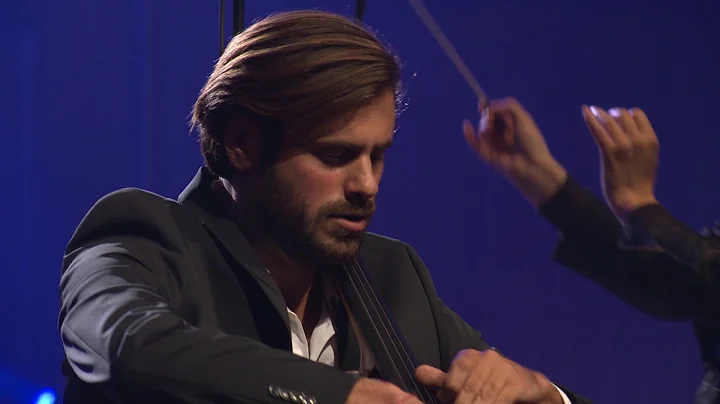Herbert J Hauser
Deceased
from Waterloo, IA
- Also known as:
-
- Jr Herb Hauser
- Herb J Hauser
- Herbert Joseph Hauser
- Phone and address:
-
600 Park Ln, Waterloo, IA 50702
(319)2918211
Herbert Hauser Phones & Addresses
- 600 Park Ln, Waterloo, IA 50702 • (319)2918211
- 410 Mitchell Ave, Waterloo, IA 50702 • (319)2340010
- North Fort Myers, FL
Us Patents
-
Interference Fit Cylinder Liner
view source -
US Patent:43997830, Aug 23, 1983
-
Filed:Mar 8, 1982
-
Appl. No.:6/356014
-
Inventors:Herbert J. Hauser - Waterloo IA
-
Assignee:Deere & Company - Moline IL
-
International Classification:F02F 118
-
US Classification:123193CH
-
Abstract:An interference fit cylinder liner is disclosed for use in an internal combustion engine. The cylinder liner comprises a long hollow cylindrical member open at both ends and having a smooth circular interior surface of uniform diameter. At one end of the cylindrical member is a deflectable thin wall portion having a circumferential convex cross-sectional outer contact surface. This thin wall portion is deflectable inward to form a tight seal with an inner surface of the cylinder head as the cylinder head is mounted to the cylinder block. This tight seal prevents the leakage of combustion gases from the combustion chamber to other parts of the engine.
-
Two-Circuit Cooling System And Pump For An Engine
view source -
US Patent:43855946, May 31, 1983
-
Filed:Aug 3, 1981
-
Appl. No.:6/289543
-
Inventors:Herbert J. Hauser - Waterloo IA
-
Assignee:Deere & Company - Moline IL
-
International Classification:F01P 312
-
US Classification:123 4129
-
Abstract:A two-circuit cooling system for an internal combustion engine including first and second fluid circuits. The first fluid circuit includes a radiator and a liquid cooled heat source while the second circuit includes a radiator and an air-to-liquid heat exchanger. A fluid pump is connected across the two circuits and facilitates independent movement of the coolant through the two separate circuits. The pump accomplishes this by using an impeller member having multiple vanes on two opposite surfaces which are of different configuration and which are divided by a wall which cooperates with the housing to form two separate fluid chambers.
-
Reduced Impact Piston Assembly
view source -
US Patent:45080194, Apr 2, 1985
-
Filed:Mar 29, 1982
-
Appl. No.:6/362816
-
Inventors:Dennis F. Kabele - Cedar Falls IA
Herbert J. Hauser - Waterloo IA -
Assignee:Deere & Company - Moline IL
-
International Classification:F01B 3110
-
US Classification:92158
-
Abstract:A reduced impact piston assembly including a cylindrical body with a cavity formed therein and having a cross-bore formed therethrough which intersects the cavity. The cross-bore receives a piston pin which has an exposed intermediate portion aligned with the cavity for attachment of a connecting rod thereto. A wide groove is formed about the outer circumference of the cylindrical body which has its center aligned with the center of the cross-bore. Positioned within this groove are a pair of C-shaped inserts, the legs of which abut the ends of the piston pin to prevent axial movement of the pin within the cylindrical body. The C-shaped inserts cooperate with the pin to form a closed loop having a circumferential length which is larger than the circumferential length of the cylinder body. In addition, a portion of each of the C-shaped inserts is in constant contact with a cylinder wall. The C-shaped inserts are constructed of a material having a thermal expansion which is similar to the thermal expansion of the cylinder wall and less than the thermal expansion of the cylindrical body.
-
Gear Pump Or Motor With A Shaftless Gear
view source -
US Patent:43868932, Jun 7, 1983
-
Filed:May 4, 1981
-
Appl. No.:6/260142
-
Inventors:Herbert J. Hauser - Waterloo IA
-
Assignee:Deere & Company - Moline IL
-
International Classification:F01C 120
F03C 208
F04C 220 -
US Classification:418191
-
Abstract:In a gear pump or motor having a housing and at least two intermeshing gears, one of the gears being fixed to a rotatable shaft and the other being a shaftless gear having a plurality of gear teeth rotatable on a film of fluid in close proximity to an interior surface of the housing, the improvement being a unique tooth profile on the shaftless gear. Each gear tooth on the shaftless gear has a thick top land, preferably at least twice as thick as the top land on each gear tooth on the gear fixed to the rotatable shaft. This particular intermeshing gear tooth configuration increases the bearing surface of the shaftless gear on the film of fluid within the interior of the housing to better support the shaftless gear and thereby reduce frictional wear.
-
Piston Assembly For An Internal Combustion Engine
view source -
US Patent:44336160, Feb 28, 1984
-
Filed:Jul 6, 1981
-
Appl. No.:6/280395
-
Inventors:Herbert J. Hauser - Waterloo IA
-
Assignee:Deere & Company - Moline IL
-
International Classification:F16J 114
-
US Classification:92190
-
Abstract:A piston assembly for an internal combustion engine having a rotatable crankshaft. The piston assembly includes a piston body having a concave configured cavity formed in one end and a plurality of recesses formed in its outer circumference. The piston body is connected to the crankshaft by a connecting rod having a spherical end which mates with the concave configured cavity. The connecting rod is secured to the piston body by an annular skirt which is attached to the piston body by a plurality of bolts. The bolts thread into retainers which are positioned in the recesses formed in the piston body.
-
Seal For An Internal Combustion Engine
view source -
US Patent:45289590, Jul 16, 1985
-
Filed:Jan 23, 1984
-
Appl. No.:6/573236
-
Inventors:Herbert J. Hauser - Waterloo IA
-
Assignee:Deere & Company - Moline IL
-
International Classification:F02M 5304
-
US Classification:123470
-
Abstract:A seal for an internal combustion engine having a fuel injection nozzle positioned within a stepped bore formed in a cylinder head. The fuel injection nozzle contains an exterior stepped configuration with a shoulder formed between its steps. The seal includes a ring circumferentially positioned around and contacting the smaller diameter portion of the fuel injection nozzle. The ring has a flat first end which abuts the shoulder of the fuel injection nozzle and a tapered second end which contacts the smaller diameter portion of the stepped bore. The taper is formed on an exterior surface of the ring and has a maximum outside diameter which is slightly larger than the smaller diameter portion of the stepped bore. The seal also contains an outwardly projecting bulge formed between the first and second ends. The bulge permits the first and second ends to move axially relative to one another as the fuel injection nozzle is axially adjusted within the cylinder head and during normal engine operation.
Resumes

Herbert Hauser
view source
Herbert Hauser
view source
Herbert Hauser
view source
Herbert Hauser
view sourceYoutube
Googleplus

Herbert Hauser

Herbert Hauser

Herbert Hauser

Herbert Hauser
view sourceFriends:
Yariv Miller
Get Report for Herbert J Hauser from Waterloo, IADeceased





